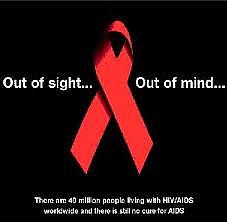Public Enemy #1: A Look at HIV/AIDS in South Los Angeles' African-American Community

The realm of AIDS/HIV and its prevalence in the African-American community is not one that has gone untouched, yet the problem continues to exacerbate.
In a recently modified web page posted by the Centers for Disease Control and Prevention, African-Americans are the racial group most affected by the disease, accounting for 44 percent of all new HIV infections in 2009 despite making up 14 percent of the U.S. population.
When compared to other racial or ethnic groups, African-Americans "account for a higher proportion of HIV infections at all stages of disease - from new infections to deaths," said the site.
Even more alarming, the rate of new HIV infection for black men, at least in 2009, was more than six times as high as that of white men, and more than two times as high as that of Latino men or black women.
With a number of prevention challenges including, but not limited to, socioeconomic issues, status awareness, lack of access to quality health care and negative perceptions about getting tested, the feat of eradicating the disease among the racial group is difficult.
But, there is hope. It can be seen by the work of organizations like AIDS Project Los Angeles, the Black AIDS Institute, WILLOW, Nia and many others who are aggressively servicing the community by offering health and dental services, instructing food demonstrations and emphasizing the importance of healthy living. Moreover, they are addressing social, cultural and religious norms, promoting risk-reduction behaviors by way of effective condom use and encouraging people to have pride in both their gender and sexual orientation.
For my project, I have proposed a three-part series on several HIV/AIDS related topics, including the role of the black church, the health implications posed by stress, and the impacts of living in food deserts.

